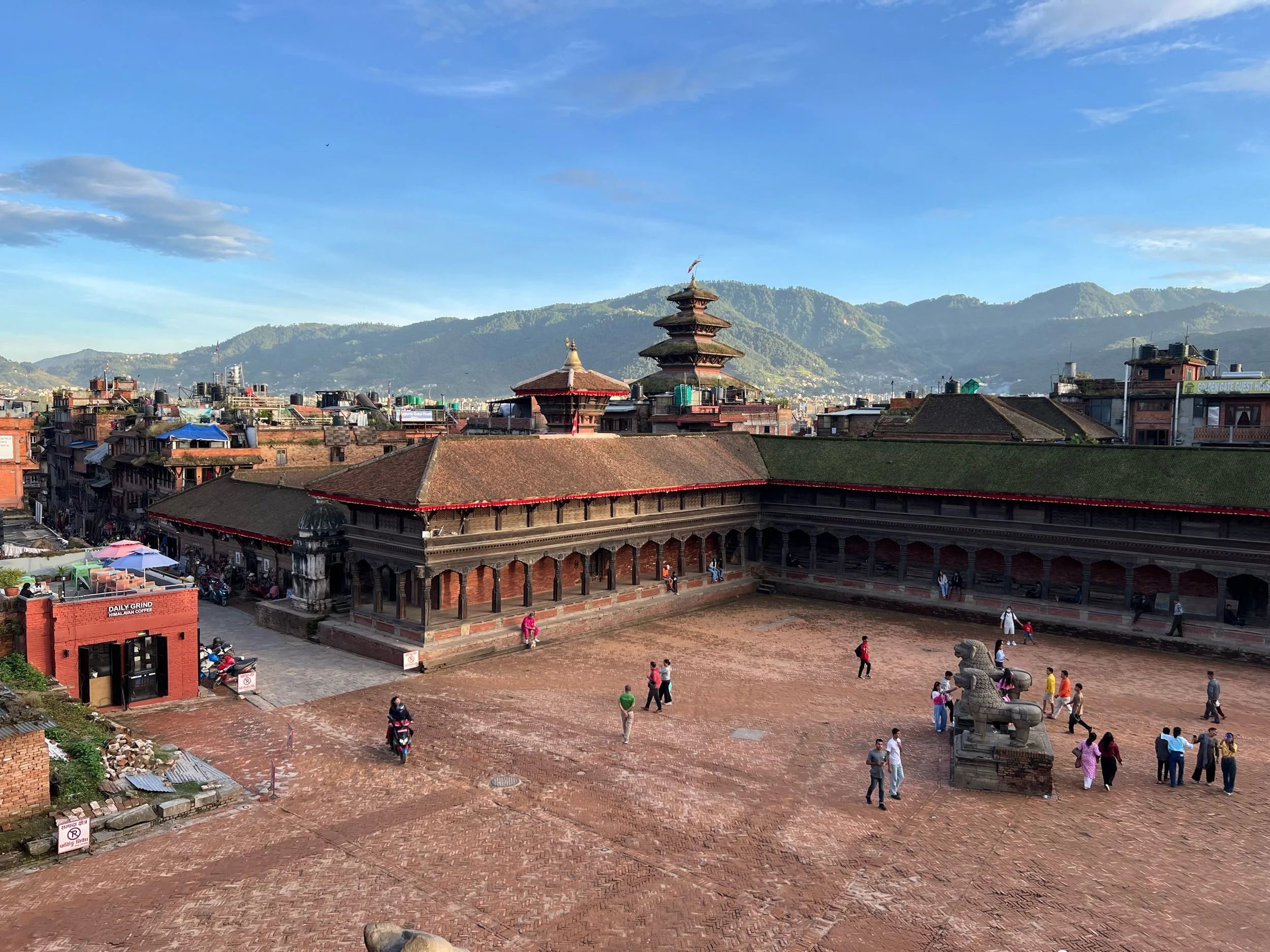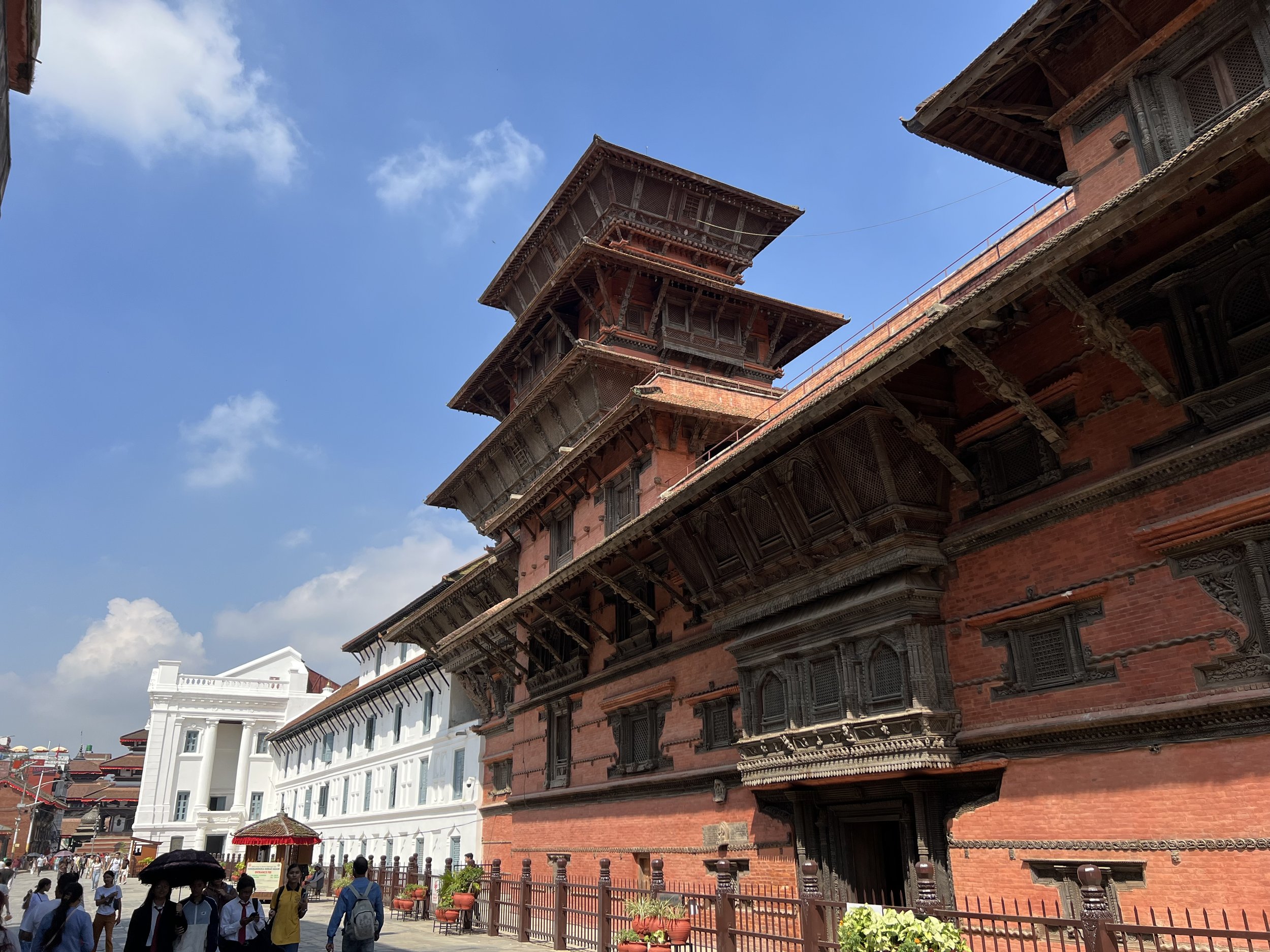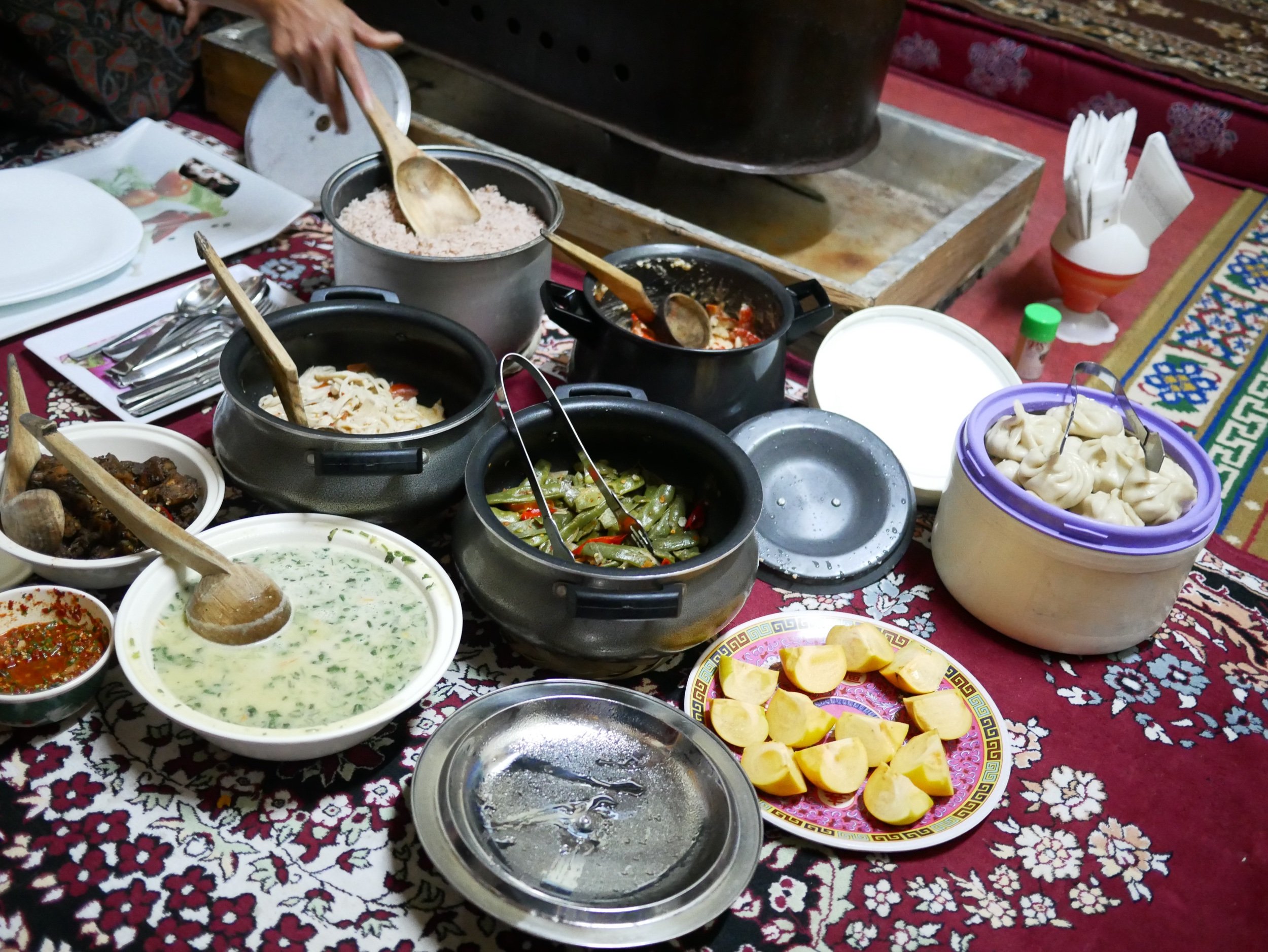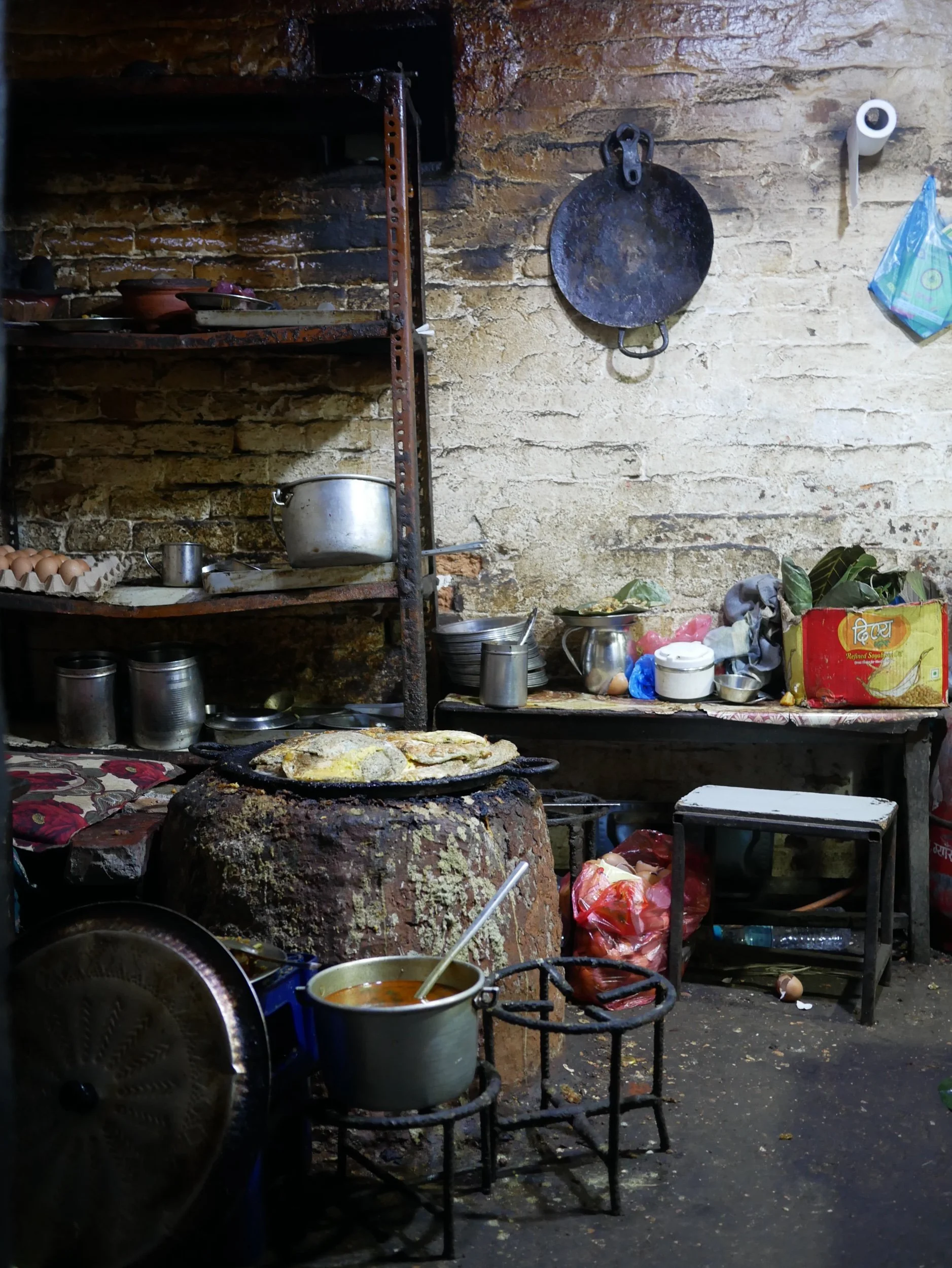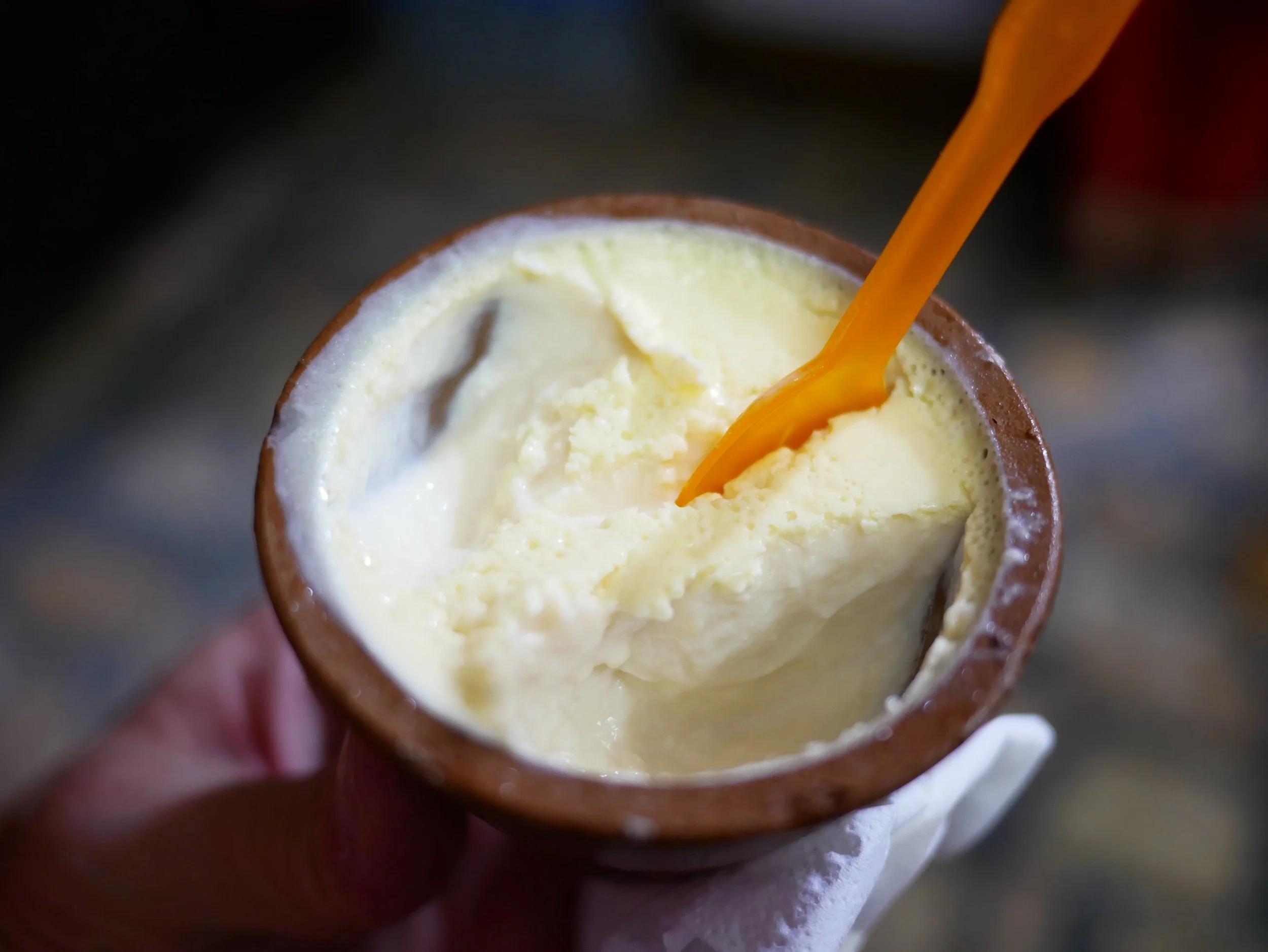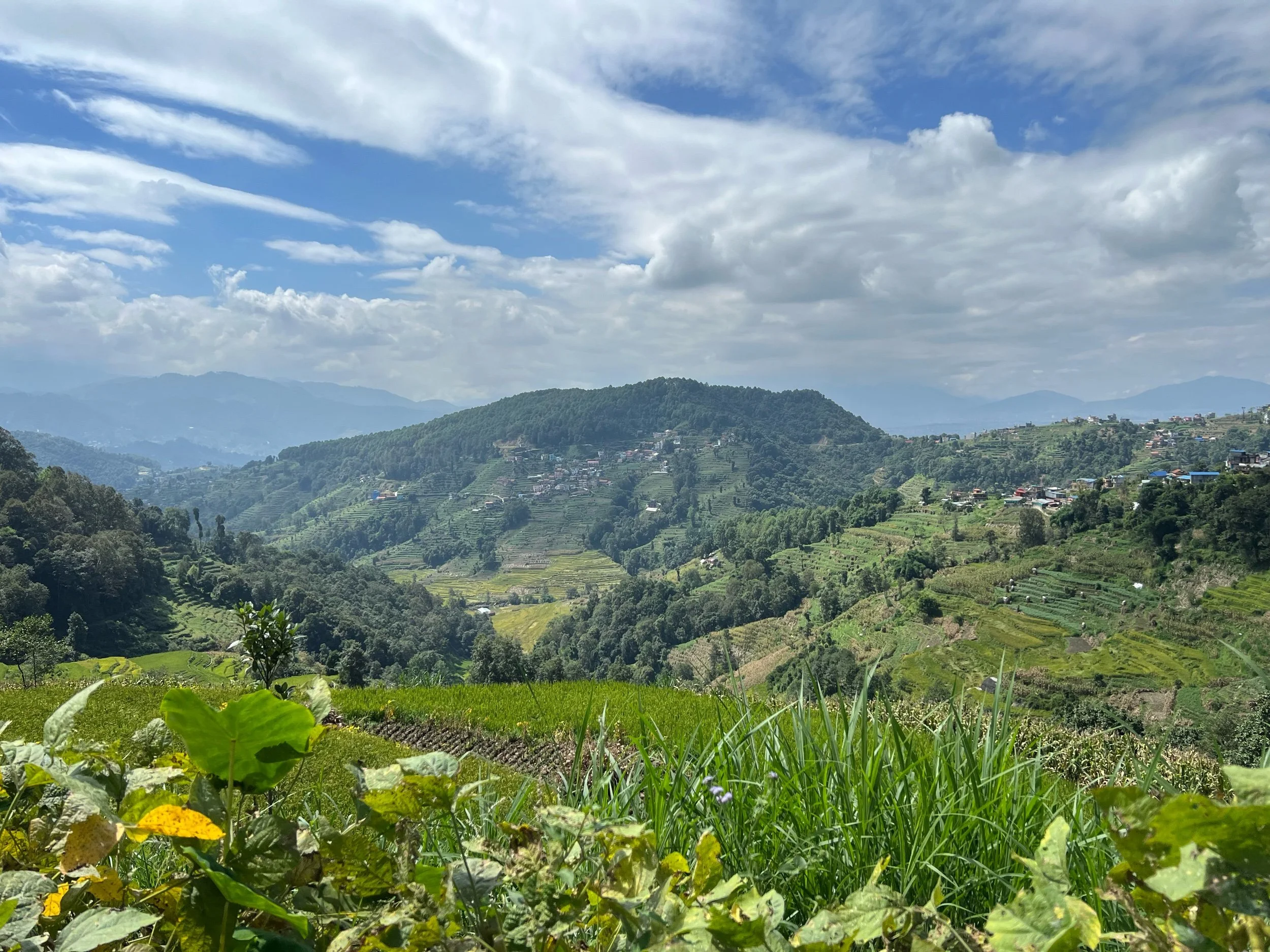7 UNESCO World Heritage Sites and 3 Durbar Squares: Bhaktapur, Patan, Kathmandu
In our relatively short tour around the Kathmandu Valley, we visited all seven UNESCO World Heritage Sites of the area.
Day 1
UNESCO World Heritage Site #1: Bhaktapur Durbar Square
On our day of arrival we were met at the airport by our guide and driver, but then after driving to Bhaktapur, we were basically left to our own devices. No matter, the hotel staff showed us on the map where to go to, and she basically said “please go to Durbar Square first.” Durbar, we learned later, means palace, and Kathmandu, Patan, and Bhaktapur were rival kingdoms but all pertaining to the Malla dynasty, so each city has its own palace.
It was a very pleasant walk to Bhaktapur’s Durbar Square, and from the Fasidega Temple, we had great views of the eastern part of the Durbar Square and beyond.
Here’s the Fasidega Temple
This statue at the bottom has the gritted teeth expression.
While its partner on the other side has a normal expression.
We actually made it in just in time through the Golden Gate and into the palace complex (though not into any of the buildings). The gate is to the left of this building, the 55 Window Palace, known for its carved wood.
Inside the complex is this pool, the Naga Pokhari, encircled by a stone cobra. Lonely Planet describes it as “a 17th-century water tank used for the ritual immersion of the idol of Taleju.”
Back in the eastern part of the square. I liked these very table-like lions!
Day 2
UNESCO World Heritage Site #2: Changu Narayan Temple
We were actually supposed to have stopped here on the way from the airport to Bhaktapur, but our delayed flight meant that we went straight to Bhaktapur.
Colorful carvings, with paws out!
UNESCO World Heritage Site #3: Boudhanath Stupa
This is maybe the most iconic monument of Kathmandu! Our guide Amit took us to a restaurant with a higher-up vantage point to look at the stupa. It was revelatory when he showed us that the outline of the stupa is a mandala! Then you have the “Eyes of Buddha,” and the nose is a symbol of nirvana. Then on top of the eyes, the “hat” has 13 steps of Buddhism to nirvana.
The green “curtain” above the eyes are like bangs. Also notice how close the airport is, with the airplane taking off.
UNESCO World Heritage Site #4: Pashupatinath Temple
This temple we weren’t allowed to enter - it’s only for Hindus. Notice how anatomically correct the bull is inside.
It’s on the banks of the Bagmati River, where open air cremation takes place. Then beyond the river is this area…
…with many monkeys!
And many holy men. Who pose for pictures (with you if you want) for a little tip.
This one is showing the hair he has grown for… I think it was 30+ years?
UNESCO World Heritage Site #5: Patan Durbar Square
Our fourth UNESCO site of the day was Patan Durbar Square. This one just gave me the impression of being jam-packed with monument after monument!
This is the inside of the palace complex.
And lots of men sitting outside of the Patan Museum entrance.
We learned here that the two golden bands coming down from the roof were ladders that the spirits use to come down!
Day 4 (really only our third full day)
UNESCO World Heritage Site #6: Kathmandu Durbar Square
This one maybe felt the most vast, and also a mishmash of different styles including European style building, the white Gaddhi Baithak from 1908.
The nagas had such long serpent bodies.
And their undulations were so even!
Love the skulls in the woodwork!
This courtyard is called Nasal Chowk. You can see in the corner is a solitary guard. He was very friendly, and allowed us to take pictures with him.
In the same courtyard.
Back outside, we visited a house called Kumari Bahal, where we waited a short while in a courtyard before the “living goddess Kumari” appeared for a few moments. Very interesting! We weren’t allowed to take pictures of her, but here is a picture inside of that courtyard earlier.
Trailokya Mohan Narayan Temple
This is a shrine to Kala (Black) Bhairava, one of the incarnations of the god Shiva. It was described to us as the god of time, and it is stomping on the person underneath, representing ignorance.
Some more scenes of the area.
On the way to the car…
UNESCO World Heritage Site #7: Swayambhunath Stupa
After Kathmandu Durbar Square we went to Kirtipur for lunch and a quick temple visit, and also a ride up and back on the Chandragiri cable car. Our final stop on the tour was the Swayambhunath Stupa, also called the Monkey Temple because of the many monkeys around.
It was a well-timed visit; the stupa really looks magnificent lit up at night!
So there it is: 7 UNESCO World Heritage Sites and some really iconic places, in 3.5 days. I think my favorites were the stupas with the eyes, especially the flatter Boudhanath Stupa. Of the Durbar Squares, I think my favorite was probably that of Bhaktapur. Maybe it was because we went at just the right time with the best light of golden hour, and maybe because there didn’t seem to be so many people there, but it just felt so atmospheric, open, and beautiful.
